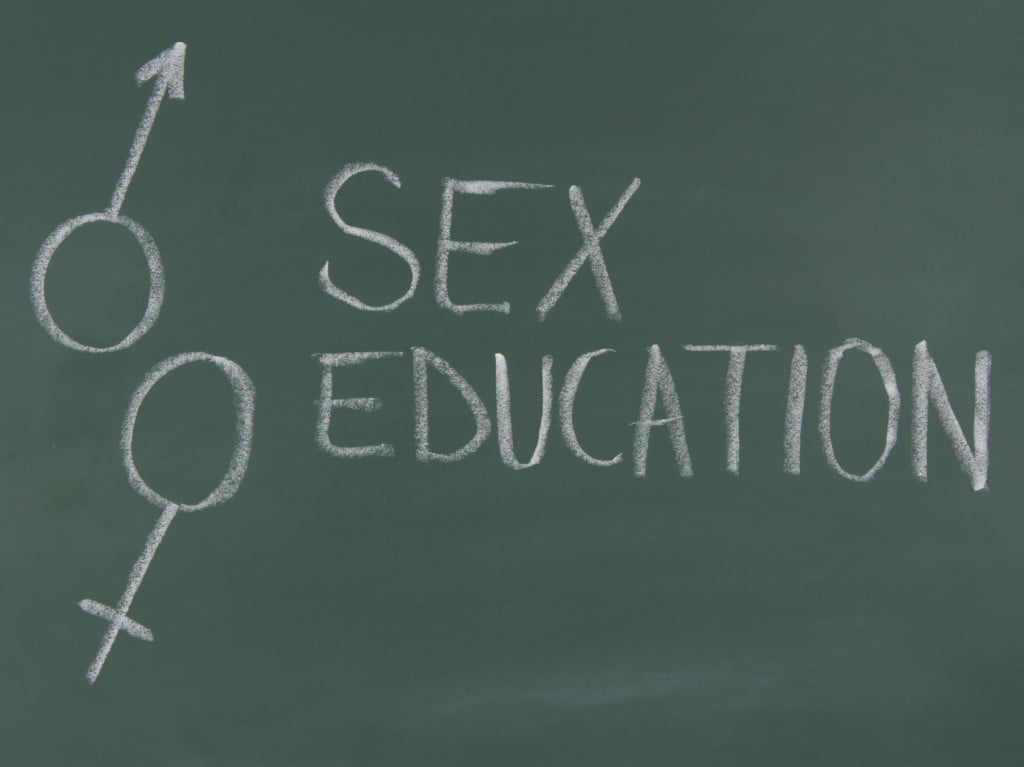The recent statement on Sex Education by the Health Minister of India has sparked off hullabaloo in the media fraternity as well as in other circles. Aniruddha Laskar deliberates here the pros and cons of introducing Sex Education in the course curriculum of the schools.
Watching a debate on prime time at 9 pm on all the leading news channels of India recently, I was perplexed about what we are debating about. Whether we are talking about having sex with condoms which is safer or how to have sex or do we at all need to brief our adolescents as to what it is all about. Listening to experts almost an hour, I was still not sure what would be the right answer that we can put forward before our students, being a faculty member of an institute myself, whereupon, I bear the task of teaching my students as to how they need to communicate with the masses. Here the masses are the teenage group before whom a serious question looms large. Are they ready for a broader curriculum for sex and sexuality education?
The debate for this once again resurfaced when the Union Health Minister Dr Harsh Vardhan under the new regime of Mr. Narendra Modi initiated the ruckus being a doctor himself by saying in his own website drharshvardhan.com, “So-called ‘sex education’ (should) to be banned” in light of his vision document for private schools in Delhi. He however was quick in tweeting back “I am against ‘so called’ sex education and not sex education per se. Crudity, vulgarity out, values in”. His website also stressed upon integration of value education in course content – a view many activists said reflected the RSS agenda. In reaction to the ministers comment, videos showing the attitude of Indians on sex education went viral in ‘Youtube’videos such as ‘Girl asks for condoms – shocking reactions’ by Video Daddy having a view of 19.26 lakh and ‘Sex Education in India’ by EastIndiaComedy with 11.52 lakh views. The later has even featured in BBC trending.
The debates and discussion about it began a long time back. This issue might be similarly faced by many adolescent who have spoken out about it among their friends in a hush hush affair or are shy to discuss it in a public forum. The simple fact that we all need to understand is that the kids of today are a few years ahead of our thought processes. Thanks to a boom in communications and the burgeoning class of social media fanatics. Briana a teenage girl from Tura of the state of Meghalaya in India, was very outright when asked whether sex education should be imparted in schools. “Without a doubt it should be taught in schools between the age groups of 12 to 19, or even beyond”, but stopped short of telling what should be added in the curriculum.
To address this issue deep down, let us take a journey to the path full of statistics that lies ahead of us and more so for a country like ours. India has the largest number of youth populace in the world. It is projected that the average age of an Indian will be 29 years by 2020. According to 2011 Census, India has more than 50% of its population below the age of 25, and 65% below the age of 35. The youths of our country is facing profound challenges of unprotected sexual intercourse leading to unintended pregnancy, sexual violence, HIV and other sexually transmitted diseases, added with the age old problem of high rates of early marriage and maternal mortality and morbidity rates.
It is in this perspective that proper education on sexual and reproductive health should be imparted to the youths of India. Teachers too have mixed reactions on this subject but believe that it is time we take up the matter more seriously. Rupam Das, a school teacher of Dhupdhara High School of Goalpara district of Assam said, “Indeed sex education should be incorporated but not before class VIII. Even students of this age group should not be taught explicitly and rather the curriculum should maintain some restraint.” While, Ripunjoy Deb Sharma of Tongla Higher Secondary School of Udalguri District of Assam was forthright in quipping, “Sex education should not be imparted till the students finish their Xth standard.”
According to a latest UN report India has the highest number of people living with HIV in the world with an alarming 21 lakh victims. UNAIDS estimated that in 2010, young people aged 15 to 24 years accounted for 41 per cent of new HIV infections worldwide. It is an area of grave concern considering the youth population of our country. Use of drugs and alcohol is gaining huge popularity among the youths of India. It is a factor that encourages unintended sexual activity. Intoxicated adolescents often forget to use protection. As per study done by social scientists, Tafadzwa and Madondo, young people are twice as likely to have unprotected sex while under the influence of alcohol and of drugs compared to when they are sober. In a similar study, carried out by Philemon, observed that, due to lack of knowledge, advice and emotional support, young men and women often practice unsafe sex, leading to high pregnancy rates and HIV infection among the youth.
The World Health Organisation’s (WHO) global coverage measure on availability of sexuality education studied in 2012, revealed that only 36 percent of young men and 24 percent of young women aged 15 to 24 years in low and middle income countries have comprehensive and correct knowledge on contraception and HIV prevention. In the Indian context, the government of India had initiated Family Planning Programme in 1950 and National Population Education Programme in 1980 though with limited success and the controversial National Aids Control Organization (NACO) and the UNICEF sponsored Adolescent Education Programme with the objective of prevention of AIDS in adolescents. Its criticism provoked the then Minister for Women and Child Development, Ms Renuka Chaudhury, to term India ‘a nation of hypocrites’.
Family Planning Association of India (FPAI) and International Planned Parenthood Federation (IPPF) etc. have introduced sexuality education in India within fine drawn lines drawing a fair share of criticism. Indian researchers Vipan and Pratibha observed that in India, the word “Sex Education” is highly inhibitory and repulsive. “It came under criticism with many State governments such as Gujarat, Madhya Pradesh, Maharashtra, Karnataka, Rajasthan banning sexuality education for adolescents or their refusal to incorporate it into the school curriculum, stating that the study material was too explicit or was against the social and moral values of the country,”, they noted.
Looking ahead towards sex education in developed countries, most adolescents in the United States receive some form of sex education at school at least once between grades 7 and 12; many schools begin addressing some topics as early as grades 4 or 5. Academic and other proponents of the National Sexuality Education Standards advocate that by the end of the fifth grade, students should be able to define “sexual orientation as the romantic attraction of an individual to someone of the same gender or a different gender”.
While in schools of United Kingdom, Sex and relationship education (SRE) is compulsory from age 11 onwards. It involves teaching children about reproduction, sexuality and sexual health. It doesn’t promote early sexual activity or any particular sexual orientation. Some parts of sex and relationship education are compulsory – these are part of the national curriculum for science. Parents can withdraw their children from all other parts of sex and relationship education if they want. All schools must have a written policy on sex education, which they must make available to parents for free.
It is very easy to access information about sex, sexuality and related topics with the rising internet resources, mobile and other telecommunication gadgets. But the question to ponder upon is the reliability of such information giving incomplete and often misleading information. It is high time that the government should take up the task to impart sexuality education in India and monitor its proper implementation learning from its earlier campaigns and by removing the inhibition associated with the word ‘sex’ as well as preconceived irrational fears and increasing resistance from political opponents.
A comprehensive sex education can only help the present generation live a secured life. Sex education cannot be a typical educational practice in school; it should cover all psychological, physiological and social issues that can force a person to think about the urgency for this kind of awareness amongst school goers. Children reaching the teen phase starts showing peculiar behavior that can grow up into bigger problems in future, if not given the right knowledge at the right time. An effective sex education at school along with adequate communication between parents and children at home can bring about a lot of change. The only question that needs to be addressed now – Are we ready then to dismantle the ‘hypocrisy’ ingrained into the psyche of the policy makers and thereby incorporate SEX EDUCATION into the course curriculum of our schools?
The writer is a senior journalist and an academician. He can be reached at anilaskar@gmail.com







